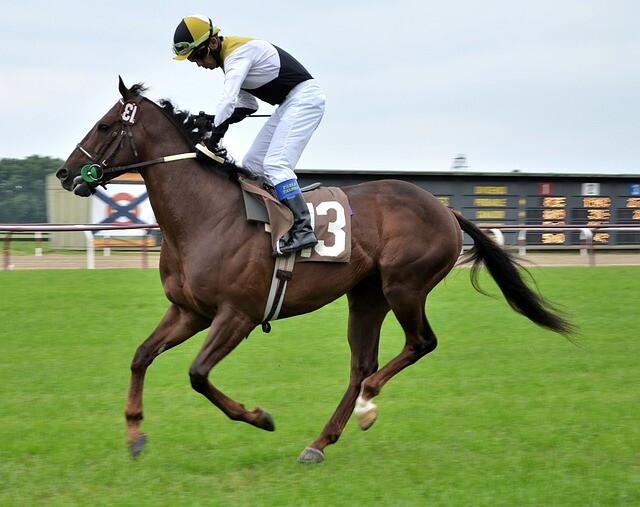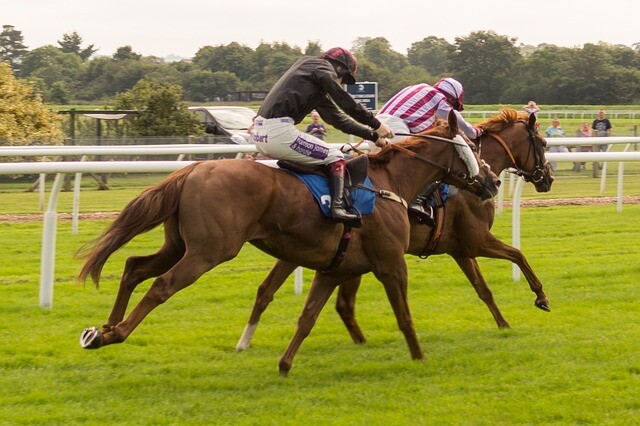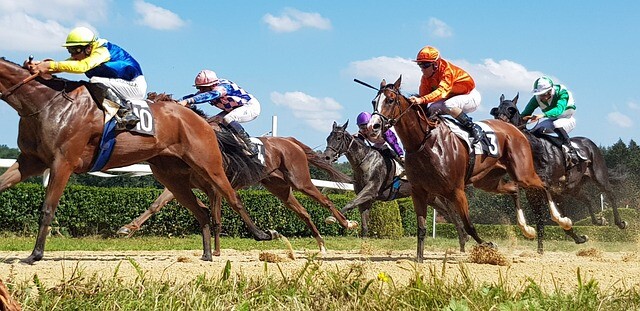The Most Asked Questions About The Grand National
 Being one of the most prestigious and well-known events throughout the horse racing calendar, The Grand National garners lots of attention across the UK and the entire world! Typically taking place in early April at the Aintree Racecourse, The Grand National is famous for many reasons, and the event features some of the most famous horses in the business. It is one of the most exciting events in the National Hunt season! Whether you are someone who enjoys horse racing for the spectacle or you like to take advantage of Grand National free bets, there are plenty of questions asked about the event. Here, we are going to run through some of these questions, providing readers with a better understanding of The Grand National event as a whole.
Being one of the most prestigious and well-known events throughout the horse racing calendar, The Grand National garners lots of attention across the UK and the entire world! Typically taking place in early April at the Aintree Racecourse, The Grand National is famous for many reasons, and the event features some of the most famous horses in the business. It is one of the most exciting events in the National Hunt season! Whether you are someone who enjoys horse racing for the spectacle or you like to take advantage of Grand National free bets, there are plenty of questions asked about the event. Here, we are going to run through some of these questions, providing readers with a better understanding of The Grand National event as a whole.
What Is The Grand National?
The Grand National is a famous annual horse race held at Aintree Racecourse, which is located near Liverpool, England. This event attracts together some of the best horses, jockeys, and trainers to compete. The titular race of this festival is filled with 30 fences over around 6.9 kilometres, which is approximately 4 miles and 500 yards.
What Makes The Grand National So Popular?
The Grand National is arguably one of the most well-known horse racing events throughout the year, with plenty of spectators either travelling to Aintree or tuning in through the television broadcast to watch this spectacular race. Yet, there are plenty of different reasons why the Grand National is one of the most special events throughout the year.
For example, The Grand National was first run in 1839, meaning it has an incredibly rich history, becoming a central part of British sporting culture. Over the years, it has grown to be one of the most famous horse races globally.
Another reason for its popularity is the challenges that the race poses, being a test of stamina, agility and endurance for both horses and jockeys. As one of the longest races in the sport and featuring 30 fences, the Grand National is one of the most gruelling challenges for competitors.
Who Are Some Of The Most Successful Jockeys And Horses At The Grand National?
Over the years, The Grand National has seen some jockeys and horses build up a legendary reputation at the Aintree racecourse. When we look at past competitors, we can see that some brilliant jockeys have ridden in the Grand National. Looking back towards the early years of this festival, George Stevens rode no less than five Grand National winners between 1856 and 1870, and he was able to win the Grand National on four separate horses, showcasing his talent as a jockey.
Former Irish jockey Ruby Walsh is widely regarded as one of the finest National Hunt jockeys of all time. He won the Grand National at his first attempt in 2000, and he ranks third behind AP McCoy and Richard Johnson in terms of jump racing!
Becoming the first female winner at Aintree, Rachael Blackmore is another incredibly impressive jockey who won the Grand National in 2021, guiding Minella Times to victory by six and a half lengths!
When looking at the different horses that have etched their name into the history of The Grand National, Red Rum is perhaps one of the most notable names, regarded to be one of the most dominant horses in Grand National history. Winning the race three times and finishing second in two years, the horse never fell in over 100 races! Being the only horse to have ever won three Grand Nationals at the time of writing, Red Rum dominated the event throughout the 1970s.
Since the incredible performances of Red Rum throughout the 1970s, over 45 years had passed since a horse won back-to-back Grand National events, but Tiger Roll was no ordinary horse. After dazzling fans with a victory in 2018, the popular horse was able to defend his Grand National crown and win the event once again in 2019. It was only the Covid-19 pandemic which could stop Tiger Roll from attempting the elusive three successive wins.
What Is The Prize Money For The Grand National?
The total prize money for the Grand National is quite substantial, with the prize pool often exceeding £1 million. Of course, the winner typically takes home a significant portion of the prize pool as whoever takes first place is awarded around £500,000.
Summary
To conclude, the Grand National is one of the most highly anticipated events throughout the world of horse racing. With plenty of fascinating facts and unique qualities, the Grand National will continue to stand out throughout the sport of horse racing and the National Hunt calendar.
 Terry Ramsden is a person who gets varied comments relating to his past business and especially his love of horse racing and gambling. Some think he was a hero while others think he was a fool. I have a soft spot for the Essex man who made a fortune then lost it all.
Terry Ramsden is a person who gets varied comments relating to his past business and especially his love of horse racing and gambling. Some think he was a hero while others think he was a fool. I have a soft spot for the Essex man who made a fortune then lost it all. The foundation stallions, or foundation sires, of the Thoroughbred breed are those to whom all, or nearly all, modern Thoroughbreds can trace their paternal bloodline. Although by no means the only stallions to be imported into England in the late seventeenth and early eighteenth centuries – according to the General Stud Book, first published in 1793, there were over 200 – the names that have gone down in history are the Byerley Turk, Darley Arabian, and Godolphin Arabian.
The foundation stallions, or foundation sires, of the Thoroughbred breed are those to whom all, or nearly all, modern Thoroughbreds can trace their paternal bloodline. Although by no means the only stallions to be imported into England in the late seventeenth and early eighteenth centuries – according to the General Stud Book, first published in 1793, there were over 200 – the names that have gone down in history are the Byerley Turk, Darley Arabian, and Godolphin Arabian. Horse racing in Australia is more than a series sporting events; it is a deeply ingrained cultural phenomenon that has consistently enamoured the nation for over a century. The popularity of horse racing can be attributed to a fascinating mix of historical significance, economic impact, social engagement, and community involvement.
Horse racing in Australia is more than a series sporting events; it is a deeply ingrained cultural phenomenon that has consistently enamoured the nation for over a century. The popularity of horse racing can be attributed to a fascinating mix of historical significance, economic impact, social engagement, and community involvement.